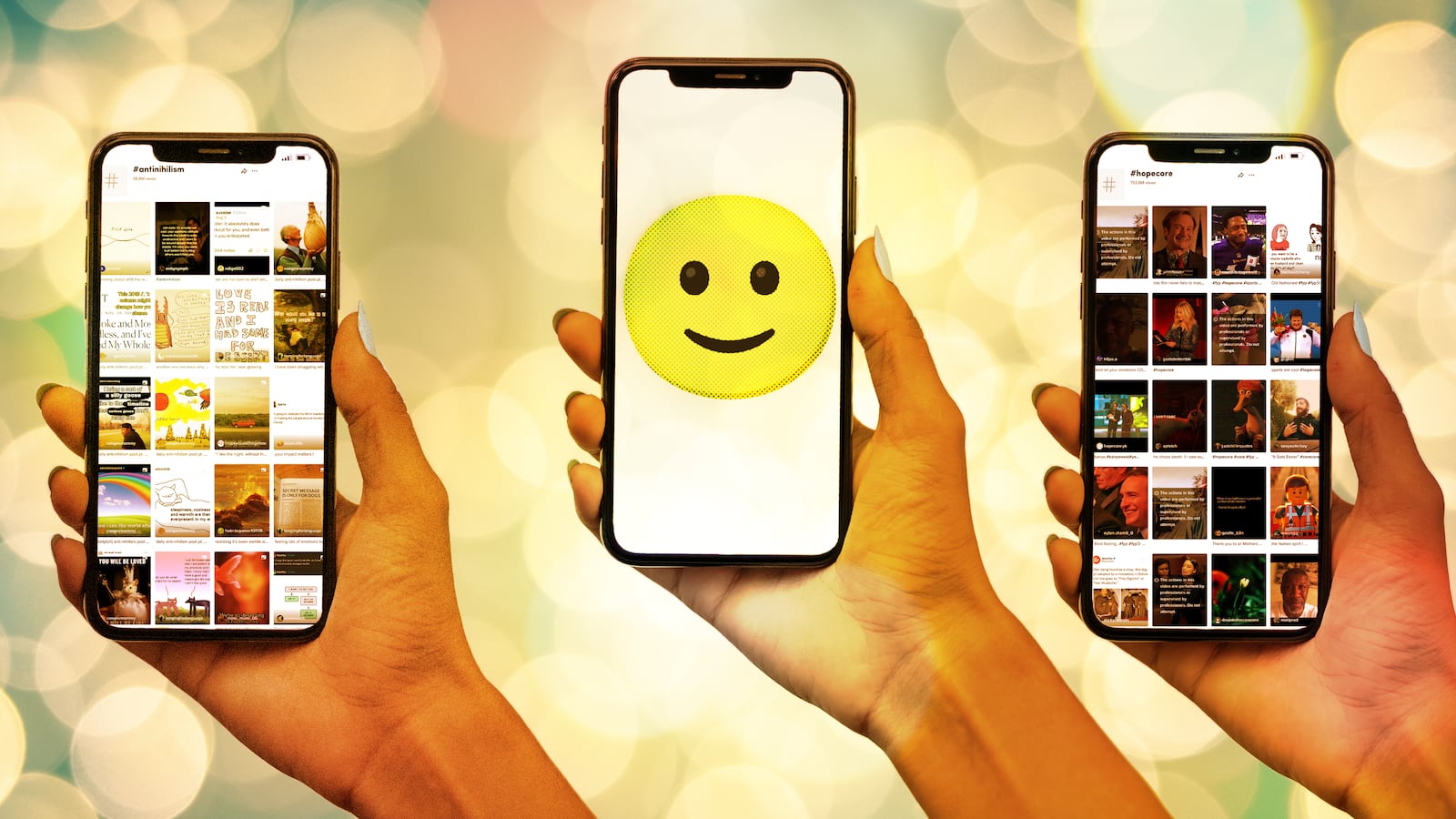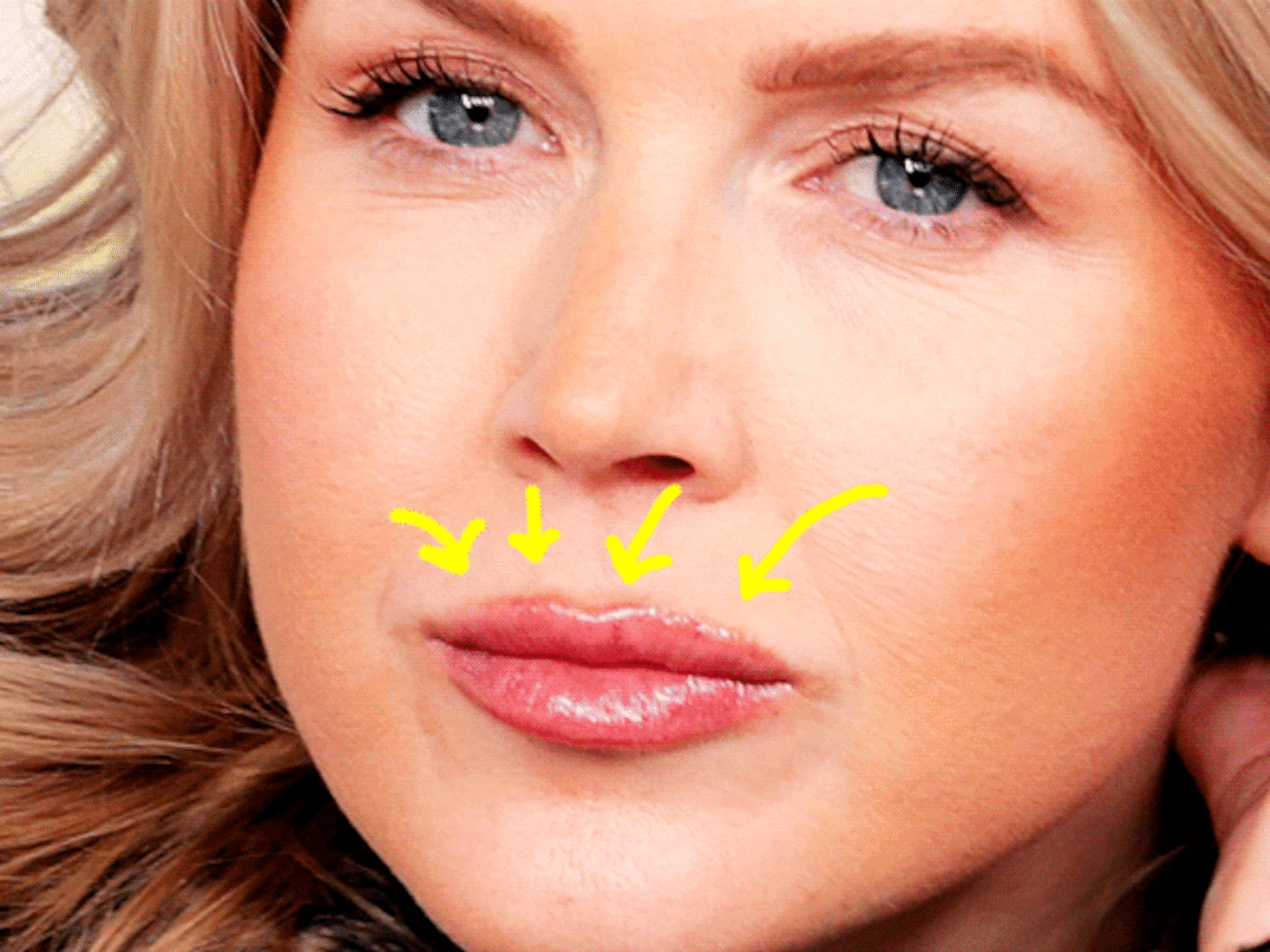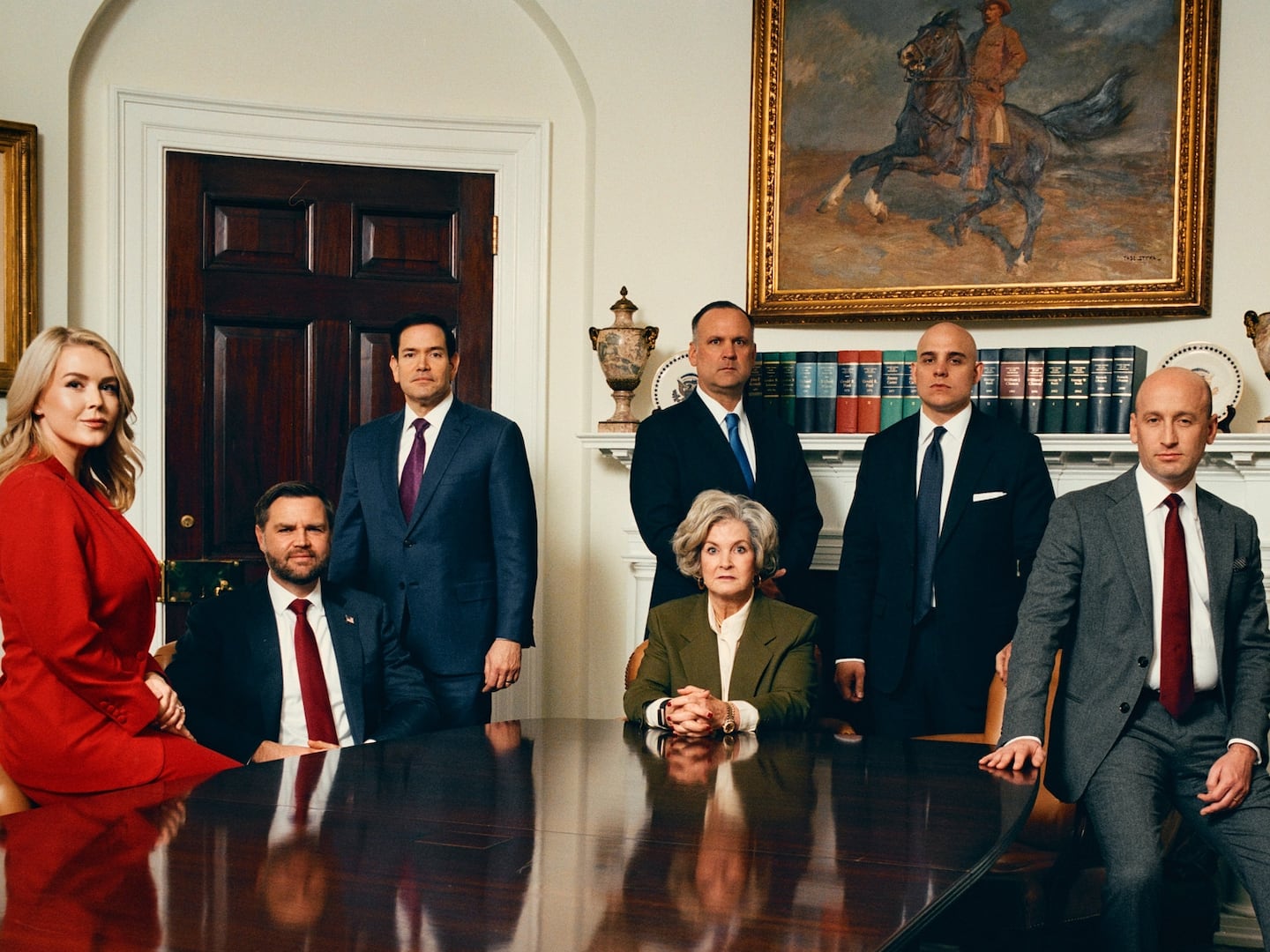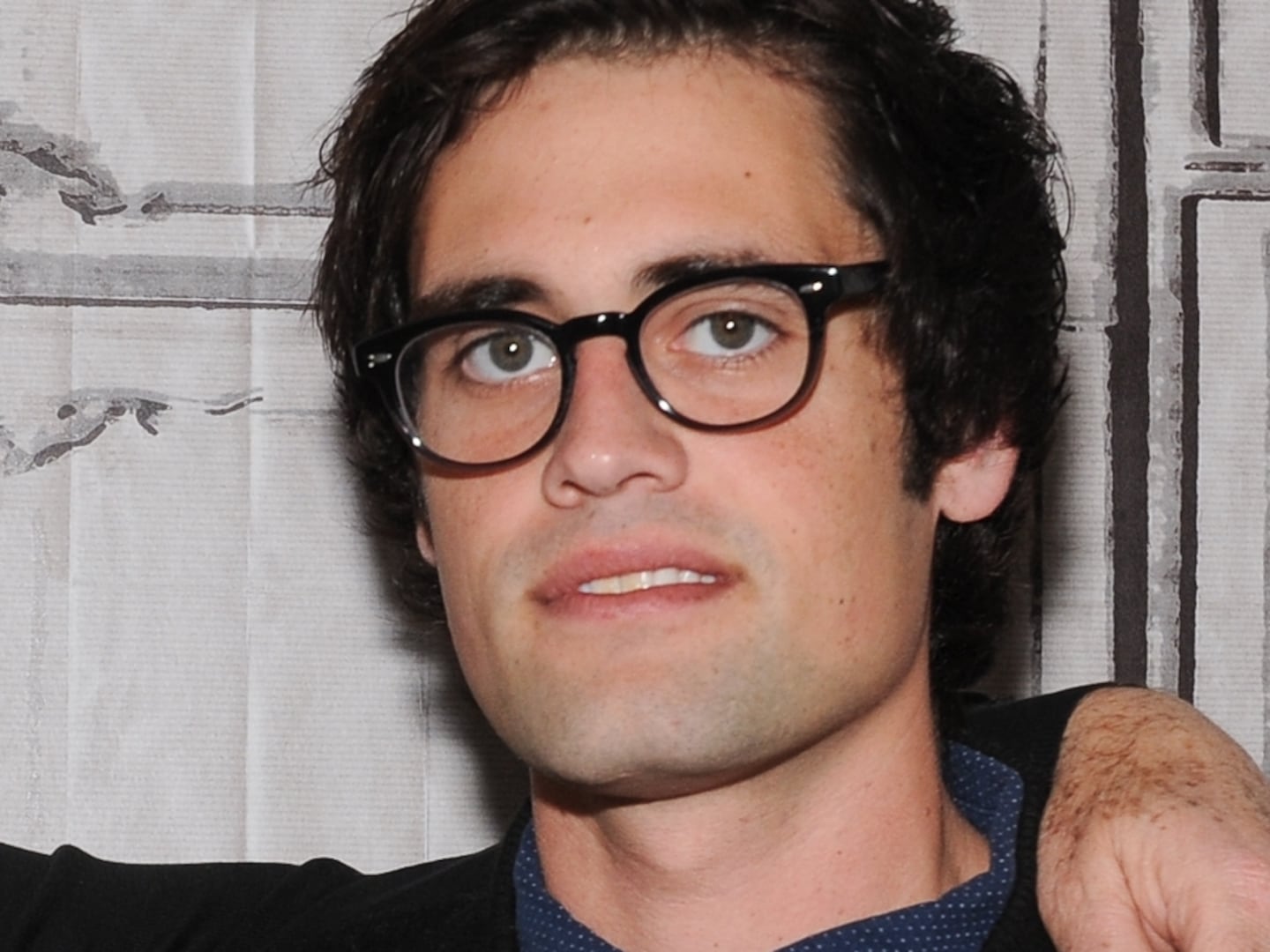Zaid Khan has spent most of his life on the internet, and though he considers himself optimistic by nature, doom-scrolling through news stories and being bombarded with fatalistic content online can make that natural positivity difficult to maintain. “I think that’s just a very easy rabbit hole to fall down when you’re using the internet—feeling like, ‘Oh my god, everything sucks, we’re all doomed,’” Khan, 25, said.
But toward the end of 2022, he noticed a new trend emerge on TikTok, often accompanied by hashtags like #hopecore and #antinihilism, that offered a different perspective, promoting a kind of radical optimism.
The trend takes on many forms: a series of inspiring sports clips or video game scenes spliced together; a slide show of quotes, tweets or web comics; or front-facing camera videos expressing some hopeful idea. Like the corecore trend before it, the format uses images or videos to evoke an emotional reaction in the viewer, ranging from the profound to the sentimental.
In one video, a user responds to the statement “I hate living” with the caption: “All my homies rejoice in the day the Lord has made.” In another, a man gazes into the camera with the words of the existentialist philosopher Albert Camus written above him: “In the depth of winter, I finally learned that within me there lay an invincible summer.” The appreciative comments on the videos suggest that the message has struck a nerve. “This trend is seriously helping me since it’s been really rough lately,” wrote one commenter on the Camus video. “We’re all going to make it,” wrote another.
In November, Khan decided to create his own video in this new genre, posting a 14-second slide show of uplifting messages overlaid on top of video footage of himself playing one of his original piano compositions. He captioned it “resist the dread,” and it became the first in his series of “anti-nihilism” TikToks that have since gained tens of thousands of views.
@zaidleppelin resist the dread #antinihilism #piano #ambient ♬ original sound - zaid leppelin
Today, the hopecore hashtag has more than 700 million views on TikTok and overlaps with other hashtags like #hopeposting and #optimisticnihilism, and more recent trends like #webweaving, and #positiveslideshows.
Part of the trend’s success comes from its ability to acknowledge hardship while also encouraging viewers to persevere anyway. Carolyn Fan, the creator of another anti-nihilism series on TikTok, said that it was important to her that her content not advocate for a kind of “toxic positivity” mind-set that refuses to acknowledge real suffering.
“I don’t want to fall into that trope of like, everything’s great, and everything’s going to be fine,” said Fan, adding, “I think in spite of all the things going on in the world, we can still choose to carve out these spaces.”
Part of the appeal of pessimism, said Fan, lies in its perceived intellectual credibility. “I think oftentimes, negativity or negative things are seen as more serious or more legitimate, because if you know about what’s going on, why wouldn’t you be terrified and sad and hopeless? But if you take this kind of approach of recognizing those negative things but also recognizing the positive forces in our lives, it feels a little less lonely, a little less hopeless.”
In the most recent trend, this tension online between optimism and pessimism has been made explicit. Earlier binaries, like memes about “doomer” pessimists and “bloomer” optimists, only gestured to these philosophical differences. Now, one of the most popular meme formats that has come out of the genre places the tension between despair and hope at its center, in the form of an epic battle in which “the indomitable human spirit” triumphs over the “indifferent cruelty of the universe” as the song “Viva La Vida” by Coldplay plays in the background.
@knowyourmeme The indominable human spirit vs the cold cruelty of the universe. 🥊 #memes #indomitable #indomitablehumanspirit #indomitablehumanspiritmeme #beserk #wholesome #wholesomememes ♬ original sound - Know Your Meme
A balance between optimism and pessimism is more often a healthier approach, said Whitney Goodman, a therapist with over 500,000 followers on Instagram and the author of Toxic Positivity: Keeping it Real in a World Obsessed With Being Happy.
Goodman said that rather than focusing on our feelings of powerlessness and doom, it’s healthier to take the perspective of, “What is my individual power or responsibility in this situation to help make this better?”
This conflict isn’t new. Optimism and pessimism have often taken on important political and cultural dimensions, the pendulum swinging between them over time. In the 19th century, debates between nihilists and anti-nihilists took place in the pages of several Russian novels, including Ivan Turgenev’s Fathers and Sons, in which young nihilists buck against the standards of liberalism and traditionalism represented by their parents’ generation.
When it comes to internet nihilism, online sentiment took a turn sometime during the election of former President Donald Trump, said Don Caldwell, the editor in chief of Know Your Meme. When Caldwell joined the website more than 12 years ago, “wholesome memes” were ubiquitous, and viral videos like “David After Dentist” and “Zombie Kid Likes Turtle” were more often silly than cynical.
The rise of Trump marked 2016 as “a pivotal year for internet culture going quite a bit darker,” Caldwell said. The term “wholesome memes” grew in popularity as a way to distinguish optimistic content from a new default meme language characterized by irony and edginess.
For Mia Cole, 18, the propensity for despair online has lasted for most of her adolescence. On her YouTube channel, Cole creates video essays that discuss cultural trends, including a video on social media and nihilism in which she examines the pros and cons of posting on the internet.
Cole said she sensed an “underlying sense of doom” among her peers, especially online. A recent CDC report reflects her experience: Between 2017 and 2021, high school girls reported a 16 percent increase in “persistent feelings of sadness or hopelessness,” while boys experienced an 8 percent increase. Other reports showed an increase in screen time for most age groups, and more loneliness among teens during the pandemic.
Young people are also more “susceptible to the strong emotion of social media, be it positive or negative,” said Dr. Jaclyn Halpern, a psychologist and the director of The SOAR Program for Psychotherapy, who also works with teenagers. Positive interactions might boost self-esteem, said Dr. Halpern, but negative content can also create a strong emotional reaction, especially in teens, whose brains are still developing.
“As a result, they may find themselves looking longer, spending more time going down rabbit holes that can either lead them to connect positively with people who share their background and their belief systems and create a positive environment for them, or on the flip side, draw them to more negative content that can be very damaging to their well-being,” Dr. Halpern said.
Though he’s also fallen victim to doom scrolling in the past, Khan notes that his time on TikTok has helped him by “deprogramming a lot of the malaise and negativity” that he typically encounters on the internet. It’s also helped him find a voice online, and connect with similarly minded users, he said.
Despite the many legitimate reasons young people have to despair, Cole also believes there is still room for hope. “It’s looking bad out there for us, and the issue is, when you’re younger, there’s simply not much you can do about it,” she said. “But I think that’s ‘the indomitable human spirit,’ right? Whatever challenge is presented to us, we always just have to accept it and get past it.”
For Matt Hershberger, a freelance writer and the creator of an anti-despair reading list series on TikTok, becoming a father and seeing the world through the eyes of his young children helped him finally change how he navigated the internet and embrace optimism.
“For most of my early adulthood, I was just extremely pessimistic about the trajectory of our civilization. And then I had kids, and I kind of started realizing that I don’t have the luxury of being resigned and cynical about the future anymore,” he said. Browsing social media often left him feeling depressed and at least one recent study has shown that doom scrolling, or obsessively seeking negative information online, has been linked to psychological distress and lower life satisfaction.
Hershberger’s new reading list has swapped out the bleak plots he enjoyed in the past for titles like Hope in the Dark by Rebecca Solnit, What Then Must We Do? by Gar Alperovitz, and Why Civil Resistance Works by Erica Chenoweth and Maria Stephan.
Shifting toward hope can be difficult, but it can also jump start new ideas and directions. For Fan, her anti-nihilism series has influenced her work as a Ph.D. student in public health, prompting her to include a focus on the “strengths and assets” of the marginalized communities she studies in her research project, rather than only looking at their challenges and hardships.
For Khan, who quit his tech job in January after experiencing burnout, the trend has emboldened him to imagine new possibilities in his career and in his life, including working on recording a studio album of alt-pop music. “I definitely had this awakening or revelation in the past few months that life is very short, and I feel like we all owe it to ourselves, if we have the means, to really explore more of our passions and more of what we actually care about,” he said.
Internet spaces, like life, are what you make of them, and Khan said he was grateful for the influx of hopeful videos that have helped shape his new perspective. In recent months, he’s also seen the trend evolve, exploring not just hope but other concepts like grief, friendship, and loneliness but with a similarly sensitive, existential perspective.
“I’m overall quite optimistic,” Khan said, “and I don’t think it’s a coincidence that engaging and maintaining exposure to this kind of content really does affect your state of mind, outside, in the real world.”







